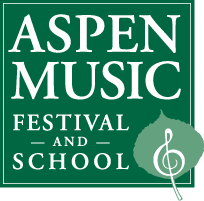« Technology and Music Criticism | Main | Lowering ticket prices »
July 25, 2006
The Zen Of Subsidy And "Congestion" Pricing
by Douglas McLennanKlaus gets it right, I think, when he talks about the money side of classical music. The costs of producing and presenting have become detached from the market demand. There are some very good reasons for this, of course, not the least of which is a sense that the art is more important than the marketplace and we need to find ways to make it happen because it's important.
So you go down the road of subsidy. And we've worked out a system of non-profit subsidy that has generated enough money to make possible a great array of artistic activity. Over the past 30 or so years, arts institutions have professionalized their business operations, and in an attempt to justify the well-run arts organization from the not-so-well-run, we've adopted formulas that suggest what percentage of a budget to be subsidized is tolerable.
But hitting the subsidy quotient is as much a philosophical thing as an economic imperative. If it's easy to raise lots of money, then the natural inclination is to expand. You expand and expand until it's too difficult to raise the money you need and you have to cut back.
That's way too simplistic an explanation for a very complex business model, but it gets me to the point I really want to make. And that's on the consumer end: The subsidy system is in part justified on making the artistic activity happen, yes. But it's also predicated on making the art accessible to more people who otherwise wouldn't be able to afford to buy tickets. If the real cost of that orchestra seat is $250, there are few who could afford to pay it. So subsidizing it allows ticket prices to be set at lower, presumably more market-competitive rates.
Except they're not so competitive anymore. Peter had a terrific story last winter about the cost of a ticket to the Philadelphia Orchestra 20 or 30 years ago and the cost today. The increases far outstripped inflation. But more than that, the cost of going to many arts events these days is not competitive. I like going to movies. If I go and it's not a great movie, I shrug it off and hope the next one will be better. The $8 or $9 investment is reasonable. But if I spend $50 or $60 for a ticket (X 2, plus $15 for parking, etc) and it wasn't great I feel cheated somehow. All it takes is to feel that way a few times and I'm less and less willing to take chances.
The $50 or $60 (much more for opera) may be entirely reasonable given the costs of producing it, but the point is that at that cost it's a different value expectation than many of the alternatives available to me.
There are lots of experiments with pricing going on right now. Five years ago museums in the UK made admission free. Overnight attendance doubled. Turns out people use a museum differently if the price barrier is removed. The Metropolitan Museum is going the other way and increasing admission to $20. That will scare some people off, but the galleries are so crowded now, that's probably not a bad thing. There's no question many people will use the Met differently because of the ticket increase, though.
The music business is also experimenting. CD sales are declining. Why? People wonder why they have to pay $18 or $19 for a CD that they might not like when they get home. Downloads are hugely popular in part because you know exactly what you're buying and the new value proposition seems to make more sense. Klaus is a master at finding ways to make the recording projects he wants to do work out at prices people will pay and that he can afford to produce.
I'm not suggesting it's all about pricing. But what's so magic about our current subsidy formulas? If a 50 percent subsidy is considered a "reasonable" business model, why not sixty percent or seventy or eighty or free? What determines reasonable or sustainable? I know, I know - it's largely based on how much money can be raised. But if the currently acceptable subsidy rate still isn't enough to keep ticket prices competitive and pay the bills, then it's not working and it's not entirely the fault of the product. Price does matter.
There's been an explosion of community orchestras and choruses in America over the past ten years. Some of the most successful classical music endeavors in terms of attracting loyal audiences here in Seattle are community groups. Partly they're successful because they have a built in community. But they're also easy to access and you don't go hoping they hit a home run every time to justify the cost of your ticket.
Posted by mclennan at July 25, 2006 08:56 AM
COMMENTS
Post a comment
Tell A Friend


